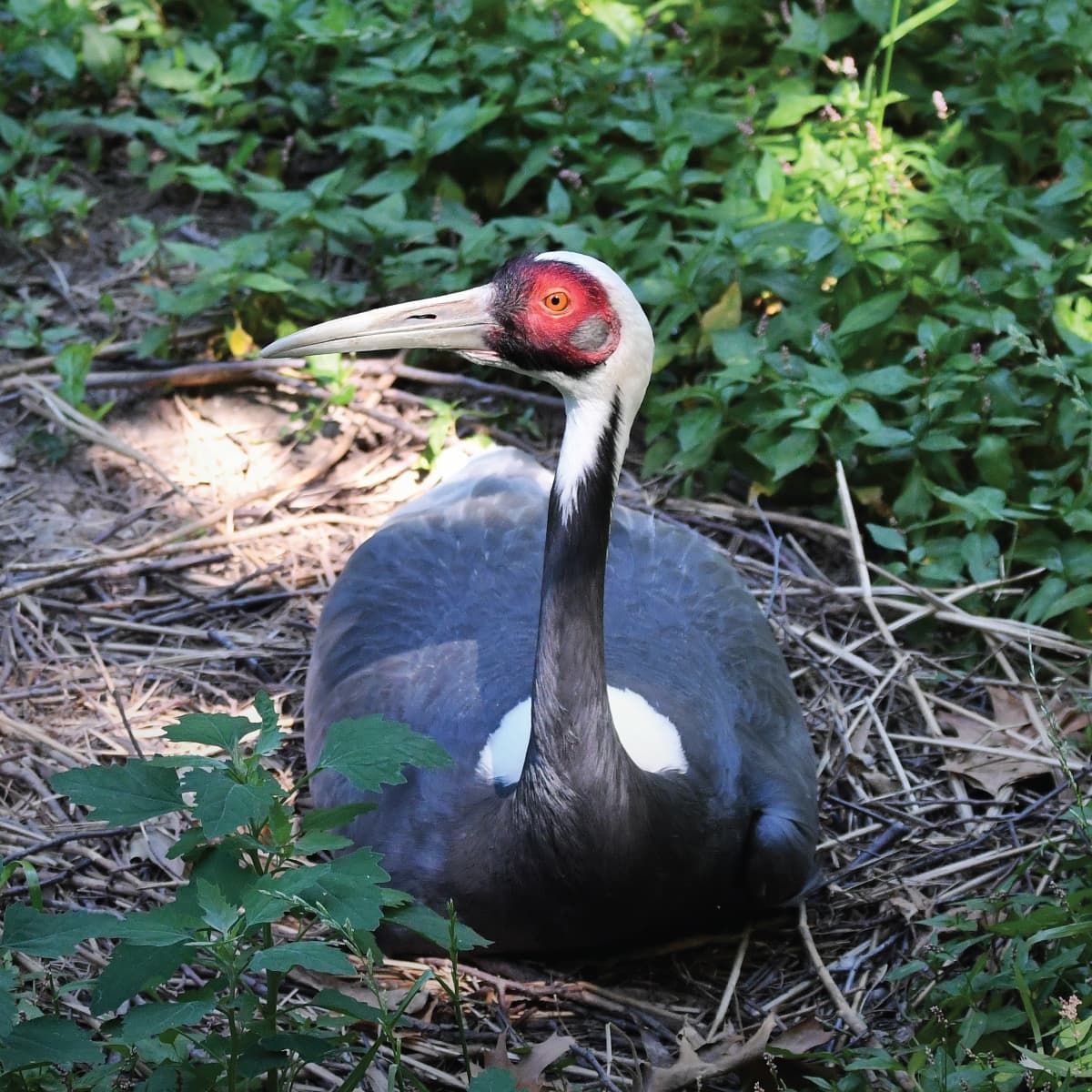
White-naped Crane
Grus vipio
Did you know?
- Cranes are the oldest and tallest family of flying birds.
- It has a high-pitched call.
- Favorite foods include plant material, insects and small rodents.
- Courtship behaviors include calls, lifting wings, dancing and jumping.
- Both males and females build a nest and incubate (sit on) eggs.
Power of Dance
The beauty and grace of these Asian cranes is unforgettable as they bow and leap, engaging in the crane dance. Though the dance is part of their courtship display, at other times it seems to be just for pure joy.
Importance of Wetlands
Cranes feed in the wild by digging with their beaks in soft, wet mud for tubers and insects. The number of white-naped cranes has declined because of human interference with their wetland habitats.
Threat Level
- Unknown
- Common
- Near Threatened
- Threatened
- Endangered
- Critically Endangered
- Extinct in the Wild
Threatened
The White-naped Crane faces a high risk of extinction in the wild.
Range
Northeastern Mongolia, northeastern China and extreme southeastern Russia
Habitat
Swamps, marshes, lakes and wet meadows along river valleys

We care about white-naped cranes
The Saint Louis Zoo supports white-naped cranes in the Bird House and Bird Garden.
Find this animal in Historic Hill

SAINT LOUIS ZOO ZONE
Historic Hill
Historic Hill is a lovely stroll through one of the oldest parts of the Saint Louis Zoo. From the 1904 World’s Fair Flight Cage to the Spanish architectural flavor of the 1920s in the Bird House, Primate House and Herpetarium to the finishing touches of our thoroughly modern exhibits, this area of the Zoo has a unique ambiance and a nostalgic history that make it a great destination.

